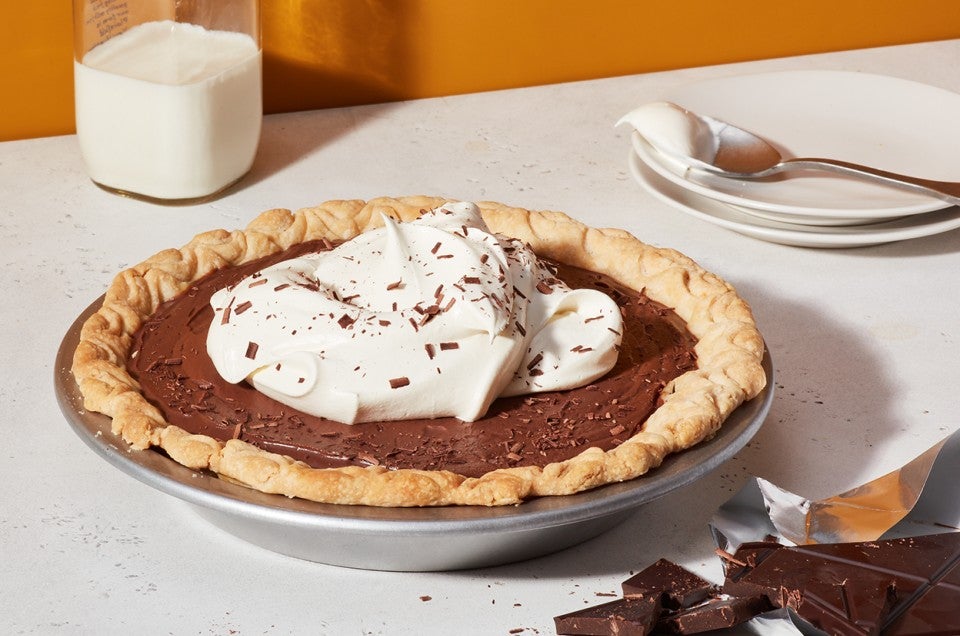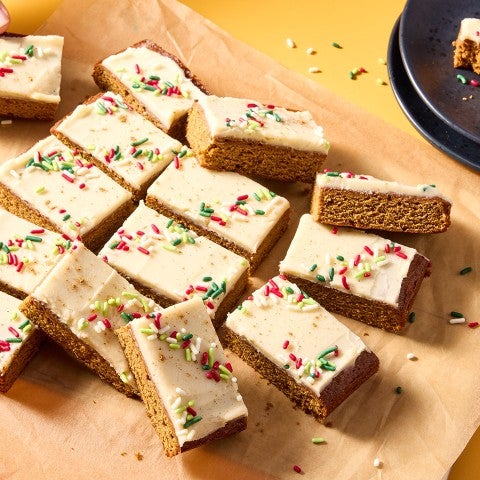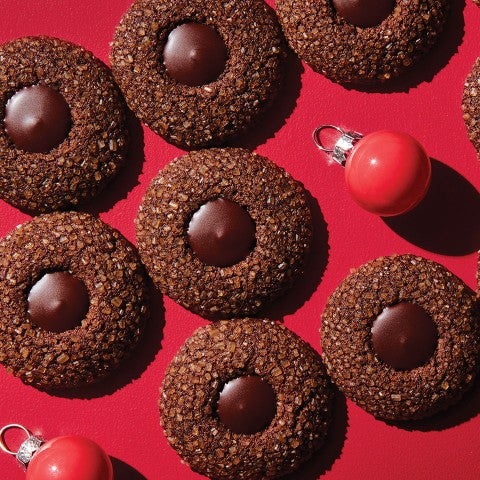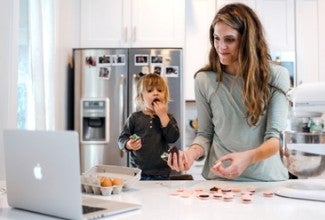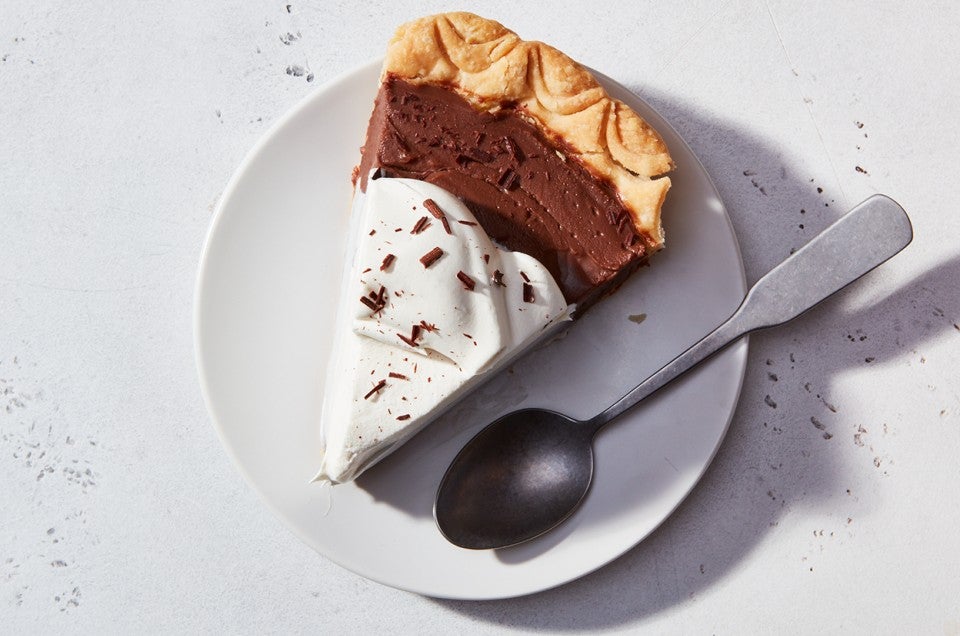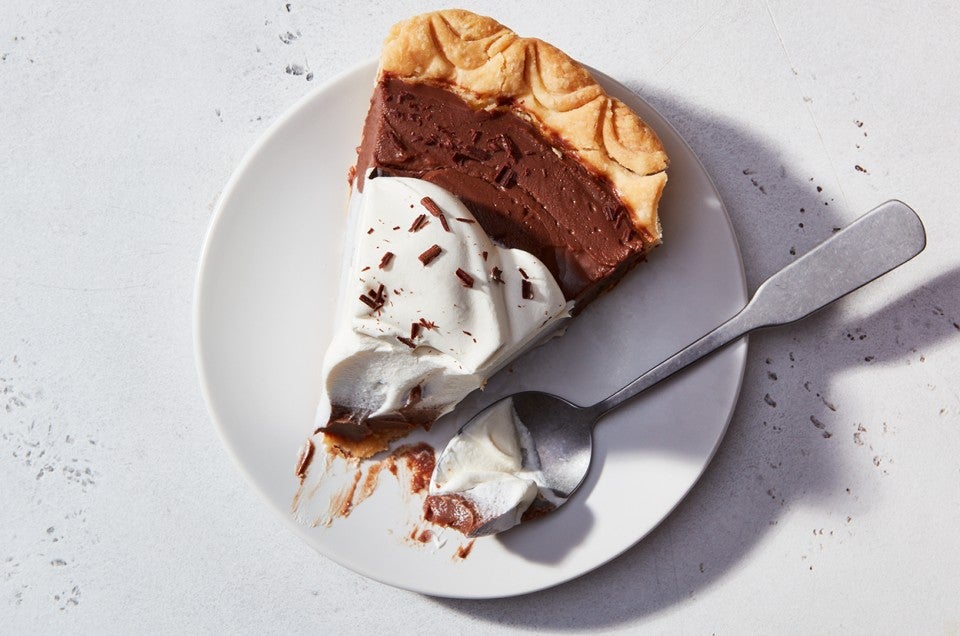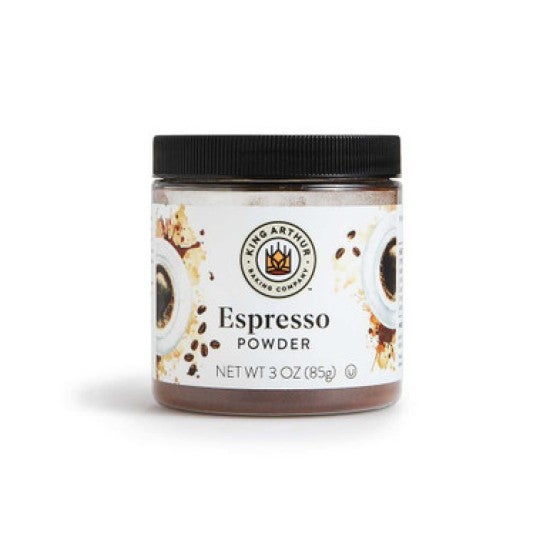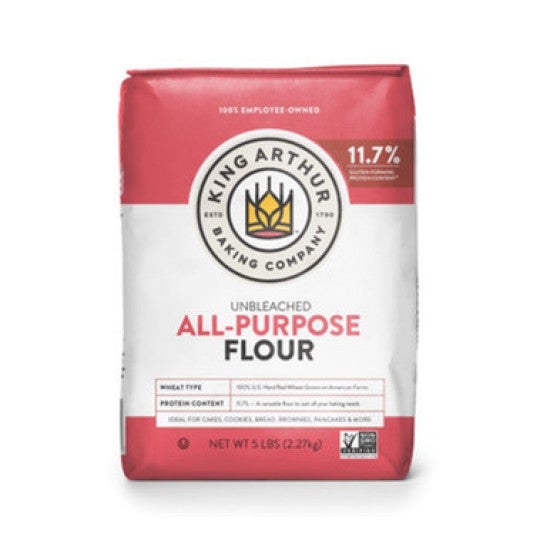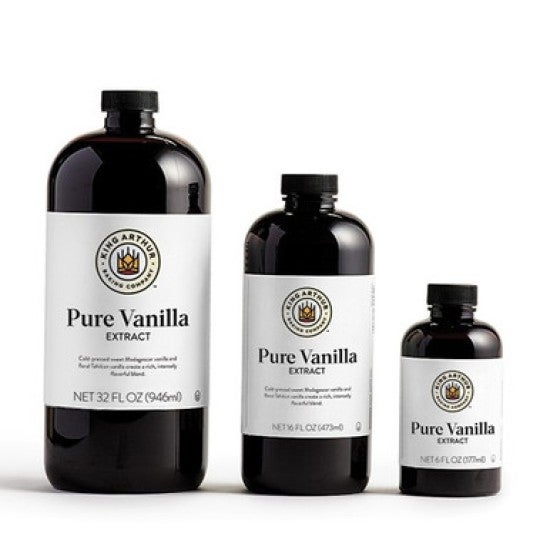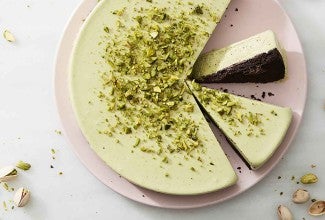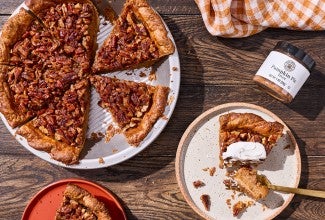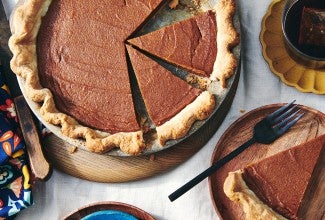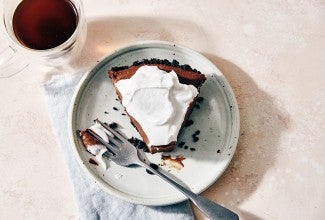-
To make the crust: In a medium bowl, whisk together the flour and salt. Work in the shortening until it's in lumps the size of small peas.
-
Dice the butter into 1/2" pieces, and work it into the mixture until you have flakes of butter the size of your fingernail. Add the water 2 tablespoons at a time, mixing with a fork as you sprinkle the water into the dough.
-
When the dough is moist enough to hold together when you squeeze it, with no floury patches or bits of dry pastry in the bottom of the bowl, transfer it to a lightly floured work surface. Fold it over on itself three or four times to bring it together completely, then pat it into a disk 3/4" thick, rolling the disk to smooth its edges.
-
Wrap the pastry in plastic and refrigerate it for 30 minutes before rolling.
-
To prebake the crust: Preheat the oven to 400°F. Lightly grease a 9" pie pan that's at least 1 1/2" to 2" deep.
-
Roll the pastry into a 13" round. Transfer it to the prepared pan, and trim the edges so they overlap the edge by an inch all the way around. Tuck the edges up and under, and flute or crimp them. Put the lined pie pan in the refrigerator to chill for 10 minutes.
-
Line the crust with foil or parchment, and fill it with pie weights or dried beans. Bake the crust for 20 minutes. Remove it from the oven, and gently remove foil or parchment with the weights or beans. Return the crust to the oven for 10 to 20 more minutes, until it's golden brown all over. If the edges of the crust start becoming too brown, cover them with a pie shield, or strips of aluminum foil. Remove the crust from the oven and cool completely.
-
To make the chocolate cream pie filling: Place the butter, chopped chocolate, and vanilla extract in a 2-quart mixing bowl; set aside.
-
In a medium saucepan off the heat, whisk together the sugar, cornstarch, cocoa, espresso powder, and salt. Add 1/2 cup (113g) of the heavy cream, whisking until the mixture is smooth and lump-free. Whisk in the egg yolks.
-
Place the saucepan over medium heat, and gradually whisk in the remaining 1/2 cup (113g) cream and milk. Bring to a boil, whisking constantly as the mixture thickens; boil for 1 minute. The temperature of the mixture will be around 200°F after 1 minute.
-
Remove the pan from the heat and pour the mixture over the reserved chocolate and butter. Whisk until the chocolate is melted and the mixture is smooth.
-
Pass the filling through a strainer into a bowl to remove any lumps. You can use the back of a ladle, a flexible spatula, or a wooden spoon to stir it through the strainer. Scrape the underside of the strainer once in a while with a clean spatula to help the process along.
-
Place plastic wrap or buttered parchment paper on the surface to prevent a skin from forming, and chill thoroughly. A shallow metal bowl with more surface area will chill the filling most quickly.
-
To make the topping: Place the heavy cream in a chilled mixing bowl. Whip until the whisk or beaters begin to leave tracks in the bowl.
-
Add the sugar and vanilla and whip until the cream holds a medium peak.
-
To assemble: Spoon the cooled filling into the cooled, baked pie crust. Level the top with the back of a spoon or an offset spatula. Spoon or pipe the whipped cream on top. Note: If you're not planning on serving the entire chocolate cream pie at once, top individual slices with a dollop of whipped cream just before serving.
-
Chill the chocolate cream pie until ready to serve. For best slicing, refrigerate overnight before serving.
